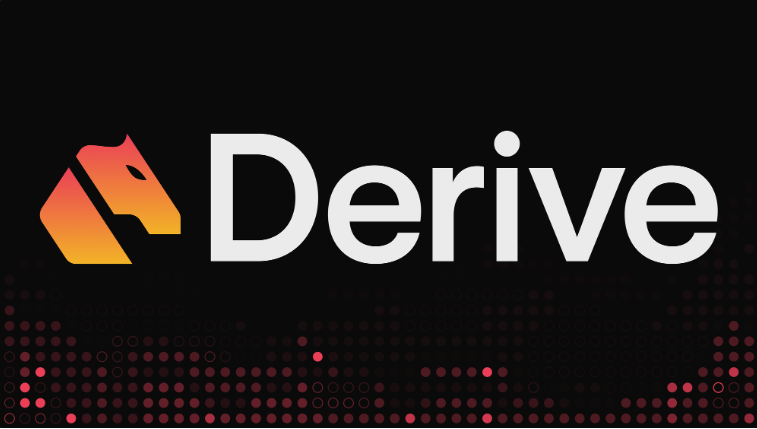As the world of decentralized finance (DeFi) continues to expand, staking has emerged as a popular method for crypto enthusiasts to earn passive income while contributing to the security and efficiency of blockchain networks. Derive Protocol, a rising star in the DeFi space, offers a unique and rewarding staking program that allows users to maximize their returns while participating in the governance and operation of the platform. This comprehensive guide will walk you through everything you need to know about Derive staking, from how it works to the benefits and risks involved.
What is Staking?
Staking is the process of locking up a certain amount of cryptocurrency in a blockchain network to support its operations, such as validating transactions and securing the network. In return for their contribution, stakers are rewarded with additional tokens. This process is a key component of proof-of-stake (PoS) and delegated proof-of-stake (DPoS) consensus mechanisms, which are energy-efficient alternatives to proof-of-work (PoW) systems like Bitcoin.
Staking not only provides an opportunity to earn passive income but also plays a crucial role in maintaining the integrity and security of the blockchain. By participating in staking, users become active contributors to the network’s decentralized infrastructure.
Introduction to Derive Staking
Derive Protocol, known for its advanced derivatives trading platform and user-centric design, offers a staking program that stands out for its accessibility, flexibility, and attractive rewards. The protocol’s staking mechanism is designed to be user-friendly, making it easy for both new and experienced users to participate.
At its core, Derive staking allows users to lock up their Derive tokens (DRV) in the network in exchange for rewards. These rewards are distributed in the form of additional DRV tokens, which can be compounded over time to generate even greater returns. In addition to earning rewards, stakers also gain voting rights in the platform’s decentralized governance system, allowing them to have a say in the future development of the protocol.
How Derive Staking Works
1. Choosing a Staking Pool
The first step in staking on Derive Protocol is to choose a staking pool. Staking pools are groups of token holders who combine their resources to increase their chances of earning rewards. By pooling their tokens together, participants can share in the rewards proportionally to their contributions.
Derive Protocol offers a variety of staking pools, each with different reward rates and lock-up periods. Some pools may offer higher rewards but require a longer commitment, while others may provide more flexibility with lower returns. It’s important to choose a pool that aligns with your investment goals and risk tolerance.
2. Staking Your DRV Tokens
Once you’ve selected a staking pool, the next step is to stake your DRV tokens. This involves locking up a specific amount of DRV in the pool for a predetermined period. The process is straightforward and can be completed through the Derive Protocol’s user interface.
When staking your tokens, you’ll need to decide on the amount and duration of your stake. The longer you stake your tokens, the higher the potential rewards, but it’s essential to consider the lock-up period, as you won’t be able to access your staked tokens until the period ends.
3. Earning Rewards
After staking your DRV tokens, you’ll start earning rewards based on the amount of tokens staked and the duration of your stake. These rewards are automatically distributed to your wallet at regular intervals, allowing you to track your earnings in real time.
One of the unique features of Derive staking is the ability to compound your rewards. Instead of withdrawing your rewards, you can choose to reinvest them into the staking pool, effectively increasing your staked amount and boosting your future returns. This compounding effect can significantly enhance your earnings over time.
4. Participating in Governance
In addition to earning rewards, staking on Derive Protocol also grants you voting rights in the platform’s decentralized governance system. This means that as a staker, you have the power to influence important decisions, such as protocol upgrades, fee structures, and the introduction of new features.
The governance process is designed to be transparent and inclusive, with proposals being submitted by community members and voted on by token holders. By participating in governance, you can help shape the future of Derive Protocol and ensure that it remains aligned with the interests of its users.
5. Unstaking and Withdrawing
When the lock-up period for your staked tokens ends, you have the option to unstake your tokens and withdraw them from the staking pool. The unstaking process is simple and can be completed through the Derive Protocol’s interface. After unstaking, your tokens, along with any accrued rewards, will be available for withdrawal to your wallet.
It’s important to note that some staking pools may have a cooldown period, during which your tokens are locked for a short time before they can be withdrawn. This period is designed to protect the network’s stability and ensure a smooth unstaking process.
Benefits of Staking on Derive Protocol
1. Passive Income
Staking on Derive Protocol offers an attractive way to earn passive income by simply holding and locking up your DRV tokens. The rewards generated through staking can provide a steady stream of income, especially when compounded over time.
2. Decentralized Governance Participation
By staking your tokens, you gain voting rights in the platform’s governance system. This allows you to actively participate in the decision-making process and contribute to the future direction of Derive Protocol.
3. Security and Network Support
Staking helps secure the Derive network by incentivizing token holders to lock up their tokens and participate in the validation of transactions. This support is crucial for maintaining the integrity and stability of the protocol.
4. Compounding Rewards
The ability to compound your staking rewards on Derive Protocol can significantly boost your overall returns. By reinvesting your rewards, you can grow your staked amount and increase your future earnings.
5. Flexibility
Derive Protocol offers a variety of staking pools with different lock-up periods and reward rates, allowing you to choose the option that best suits your investment strategy and risk tolerance.
Risks and Considerations
While staking on Derive Protocol offers numerous benefits, it’s essential to be aware of the potential risks involved:
- Market Volatility: The value of DRV tokens can fluctuate, and while staking offers rewards, the underlying token’s value may decrease, impacting your overall returns.
- Lock-Up Periods: Depending on the staking pool you choose, your tokens may be locked for a certain period. During this time, you won’t have access to your staked tokens, which could be a disadvantage if you need liquidity.
- Smart Contract Risks: As with any DeFi protocol, there are risks associated with smart contracts, including potential bugs or vulnerabilities. Derive Protocol conducts regular audits to mitigate these risks, but they cannot be entirely eliminated.
Conclusion
Staking on Derive Protocol offers an excellent opportunity to earn passive income, participate in decentralized governance, and support the security of the network. With its user-friendly interface, flexible staking options, and attractive rewards, Derive Protocol is an appealing choice for both new and experienced DeFi participants.
However, it’s essential to approach staking with a clear understanding of the risks involved and to choose a staking pool that aligns with your investment goals. By doing so, you can maximize your returns and contribute to the growth and success of Derive Protocol.



